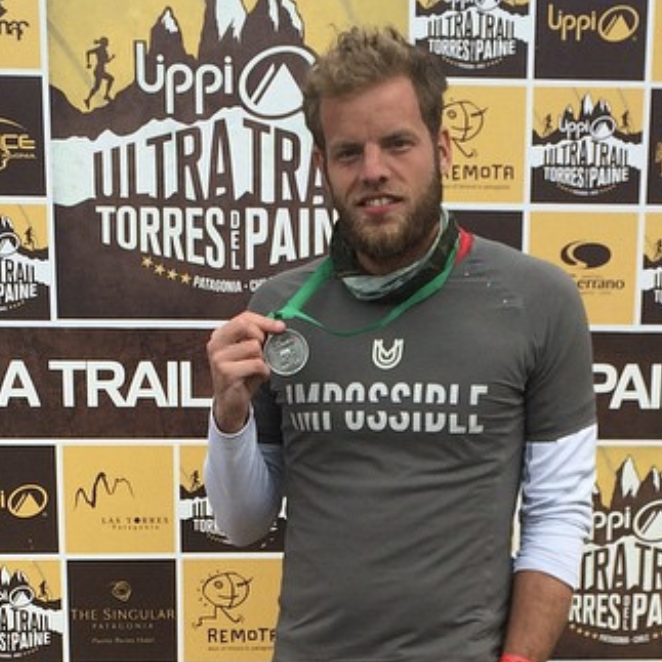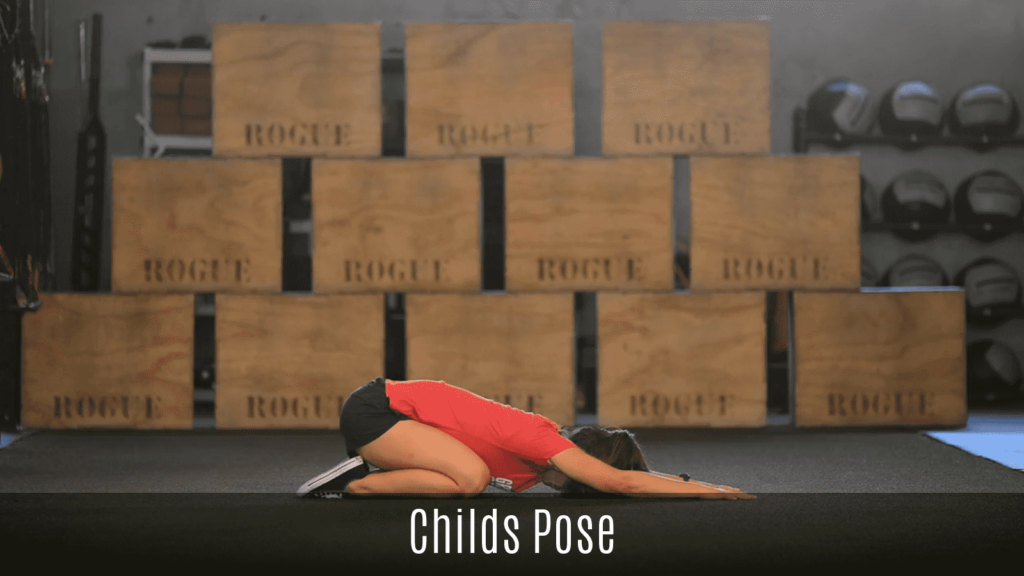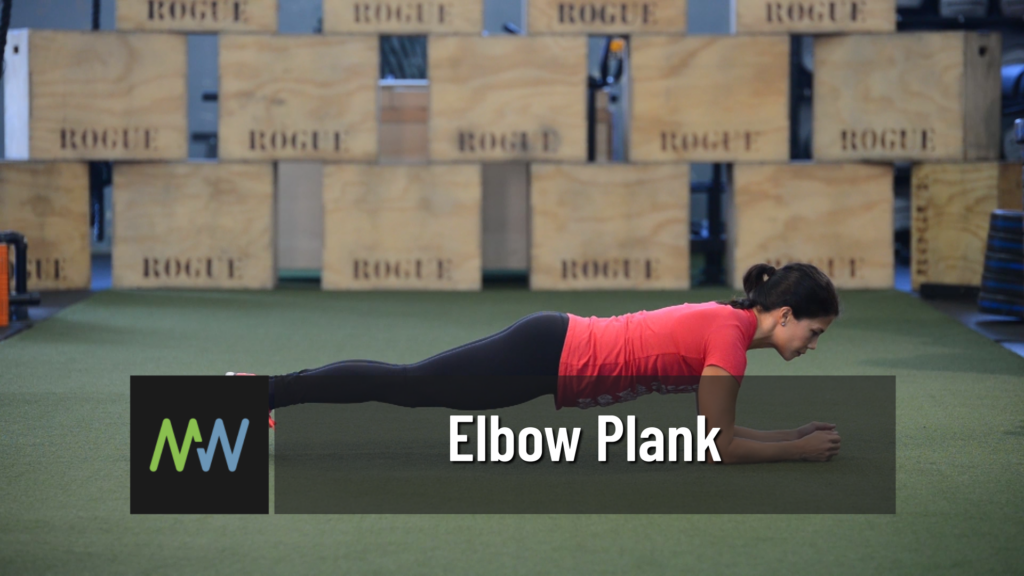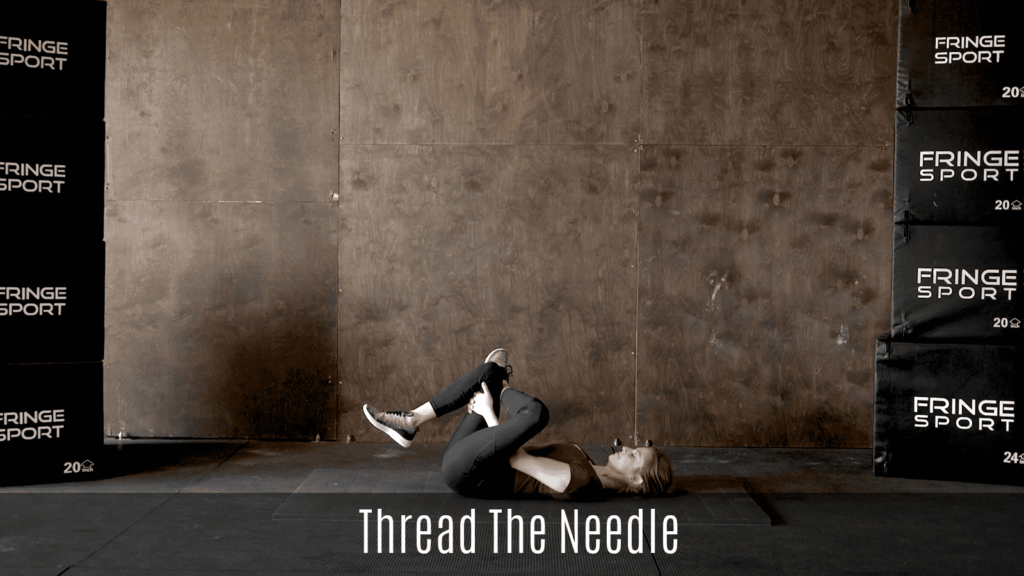The extended triangle pose is considered one of the more challenging positions in our database of movements. It is a standing position that requires flexibility, stability, and a certain amount of focus to hold. If you have ever done a yoga class in the past, chances are you have attempted this pose before.
The benefits are many when done correctly. That being said, there can be an inclination to force your body into this certain position, especially because the shape we aim to make with our body is in the name — a triangle. If you have not yet built up the flexibility or stability to go fully into this pose, it is important to know the correct ways to modify to meet your needs. With consistent practice and patience, you can build up the necessary requirements to correctly hold this pose.
This article will take you through everything you need to know about extended triangle pose. First, we will discuss how to properly execute this move with specific points of performance. Next, we will outline the benefits of including this pose in your daily or weekly stretching routine. Lastly, we will cover the proper ways to modify this pose if you need different options. Without further ado, let’s get into it.
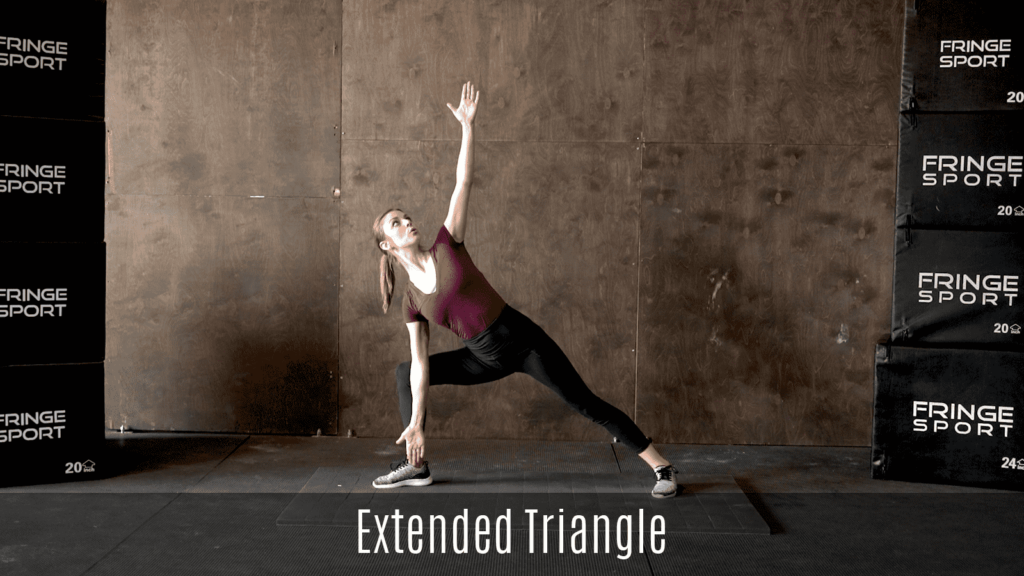
What is the Extended Triangle Pose?
This pose is best started from a standing position. In yoga, this position is often called the “Mountain” pose. Take care to set up in this pose correctly with your feet underneath your body, shoulders relaxed and pulled away from your ears, and your gaze softly focused forward. We always encourage a specific focus on core activation as well because movement should originate from the center outward. Do this by pulling your belly button in towards your spine.
Once you have set your body up with intention, step your feet outward into a traditional lunge position. From here, turn your back foot out 90-degrees. Then, bend your front knee to a 90-degree angle, keeping the knee stacked over the ankle.
With an inhale, move your torso towards your front leg and bring your forearm down onto your thigh. Next, raise your other arm up overhead and reach towards the ceiling. Your raised arm should be at a roughly 45-degree angle from your body.
Lastly, take your front arm off of your thigh and reach it towards the ground. This move will require a ton of midline stability. Your hand should rest on the inside of your ankle with your palm facing out away from your body. Rotate your head to look up towards your raised hand and hold here. Breathe deeply as you focus on holding this position.
To transition yourself safely out of the pose, bring both hands to the ground and come into a standard runner’s lunge. Walk your back foot up to meet the front and come back into the starting position. Complete this series of movements on the other side to stretch both sides of your body.
Benefits of the Extended Triangle Pose
Anyone who has completed this pose before knows just how much stability, balance, and focus it takes to hold it. Not only will it help build these two traits, but there are also muscles it helps lengthen and tone.
This pose could be considered a full body movement as it recruits and affects many different muscle groups from the top to the bottom of your body. Specifically, it lengthens the spine and stretches your lower body joints like your hips, knees, and ankles. Because the arms are involved as well, it helps stretch and strengthen your shoulder and chest muscles. Lastly, this pose has been cited as being beneficial for optimal digestion and for your abdominal organs. Some people find it especially relaxing and great to utilize during periods of stress.
We recommend using this pose as activation before a workout or as part of a strength-focused yoga routine. Because it does require strength, balance, and stability to perform, we suggest avoiding it as a cooldown.
Extended Triangle Pose Modifications
This pose is a more challenging movement, so there are ways to modify it to make it accessible to you no matter your ability level. If you do not quite yet have the flexibility to bring your lower hand close to the ground, you can use a yoga block and stack of books upon which to rest your hand. Feel free to leave your forearm on top of your quad muscle (avoid placing right on top of your knee) as well as a different way to modify this pose.
Because this does require a certain amount of balance, we also suggest working on other balancing exercises as a way to build up the strength and endurance to hold this pose. You can incorporate other strengthening exercises into your routine to benefit this posture. Core exercises are especially beneficial.
Starting in a standing position, step your feet into a lunge position. Turn the back foot out 90*. Bend the front knee as much as possible, not passing 90* with the knee directly over the ankle. Inhale the upper torso forward and place the front forearm onto the front quad. Draw the back arm up and overhead. Slowly reach up through the back arm and continue taking the back arm over the body reaching up and out roughly at 45*
